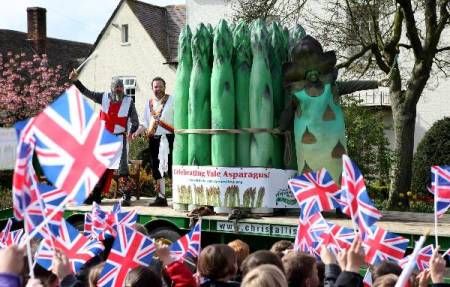What is the hidden potency of this herald of spring, this rod personifying re-birth, this green scepter, that makes asparagus a thing of curious beauty? Not just an herbaceous perennial grass, but so much more.
History
The name asparagus derives from Persian asparag or sprout, and the Greek asparagos, then, by way of medieval Latin to — sparagus. For a while in Olde England, when few partook of the vegetable, it was called spearage. In rural England, it was and still is called Sparrow grass. Until relatively recently asparagus was included in the genus of the lily family that includes onions and garlic. Today that classification is sub-divided into Amaryllidaceae and Asparagaceae — asparagus (Asparagus officinalis) is its own category.
Ancient Romans were early adopters. Cato’s De agri cultura (160 BCE) mentions asparagus. In Apicius’s first century cookery book, De re coquinaria, we find a recipe for preparing the tasty stem. The veneration of the asparagus became so intense that the Roman Emperor Augustus (63 BCE – 12 CE) created an “asparagus fleet” for transporting the desired vegetable. Roman irrigation systems unearthed near Cambridge University, that date from 120 CE, are thought to have been used to facilitate both growing grapes and asparagus.The first century physician-philosopher, Galen (b.129 CE), of Humorial theory, endorsed the asparagus as a beneficial herb, but he no doubt filched that, like so much else, from Hippocrates (c. 460 BCE).
Like so much during the Middle Ages the interest in the vegetable languished, asparagus was mostly thought of as an herb with restorative and laxative powers. No longer a delicacy.
Unknown content block type: FlexiblePageTemplateFlexibleContentPhotoFullWidthLayout
{
"__typename": "FlexiblePageTemplateFlexibleContentPhotoFullWidthLayout"
}It resurfaced, however, in 17th century France in no small part to the efforts of the Sun King Louis XIV, in a position to proclaim such things, who dubbed the asparagus the ‘King of Vegetables,’ and erected a greenhouse dedicated to its propagation.
The Dutch immigrant, Diederik Leertouwer, a New England colonist, planted asparagus in Massachusetts in 1784. The spiky spear was on the radar of America’s first gourmet, Thomas Jefferson, who raised them at Monticello. His cousin Mary Randolph included in her book The Virginia Housewife (1824) detailed directions for cooking asparagus that included scraping the stalks, tying them in bundles, and a short cooking time to ensure their “… true flavour and colour,” cautioning that “a minute or two more boiling destroys both.” Still the best advice.
Asparagus has long been at the center of celebrations.
In Germany during Spargelzeit it is all asparagus, all the time. Beginning in early April and ending on June 24th (coincidentally the feast of John the Baptist, should one be celebrating), asparagus dominates at home, in restaurants, in a soup, on a plate, even in ice cream. Many are the temporary roadside stands selling bundles of asparagus to the seasonally ravenous.
In Schwetzingen, located in the northwest of Baden-Württemberg, known as “the asparagus capital of the world,” the vegetable has been a delicacy for over 350 years. A celebratory market begins on the first Saturday in May, and has for the past 100 years.


The Netherlands is the 5th largest grower behind Spain, Italy and France. In Acen, a Dutch village in the province of Limburg, “gold fever” grips the region for the annual harvest of white asparagus (which coincides with Ascension day, should one be celebrating). Nearby, in a distillery in a restored watermill, asparagus is transformed into a potent liqueur.
There is a Fête de l’Asperge held at Fargues sur Ourbise, west of Agen, in France. The activities include the world championship for asparagus bunching (bottelage), and one will find, among many asparagus based temptations, white asparagus jam. All shades and girths of asparagus are on offer at the well-attended asparagus market in Vers-Pont-du-Gard, Uzès, in the “heart” of asparagus production in Languedoc, France.
In England, folks flock to two month Asparafest beginning on the 23rd April (St. George’s Day, should you be celebrating) in Evesham, Worcestershire, that includes an Asparagus Run (in which a fleet of Morgan cars deliver the first-of-the-season to Buckingham Palace), and tours may be taken on the Asparabus.
In California this year is the 38th annual Asparagus Festival, in Stockton (April 12-14) where you can enjoy the dubious delights of an asparagus corn dog, asparagus nachos, asparagus ice cream, or mac & cheese with asparagus.
June 8th will see the 51st edition in “The Asparagus Capital of the Nation” at Hart, located in Michigan’s Oceana County. There is a Royale Parade with an asparagus queen, a “Spear it” 5-K run, arts and crafts, a cooking competition (asparagus cheesecake?), and lots to eat and drink.![]()
